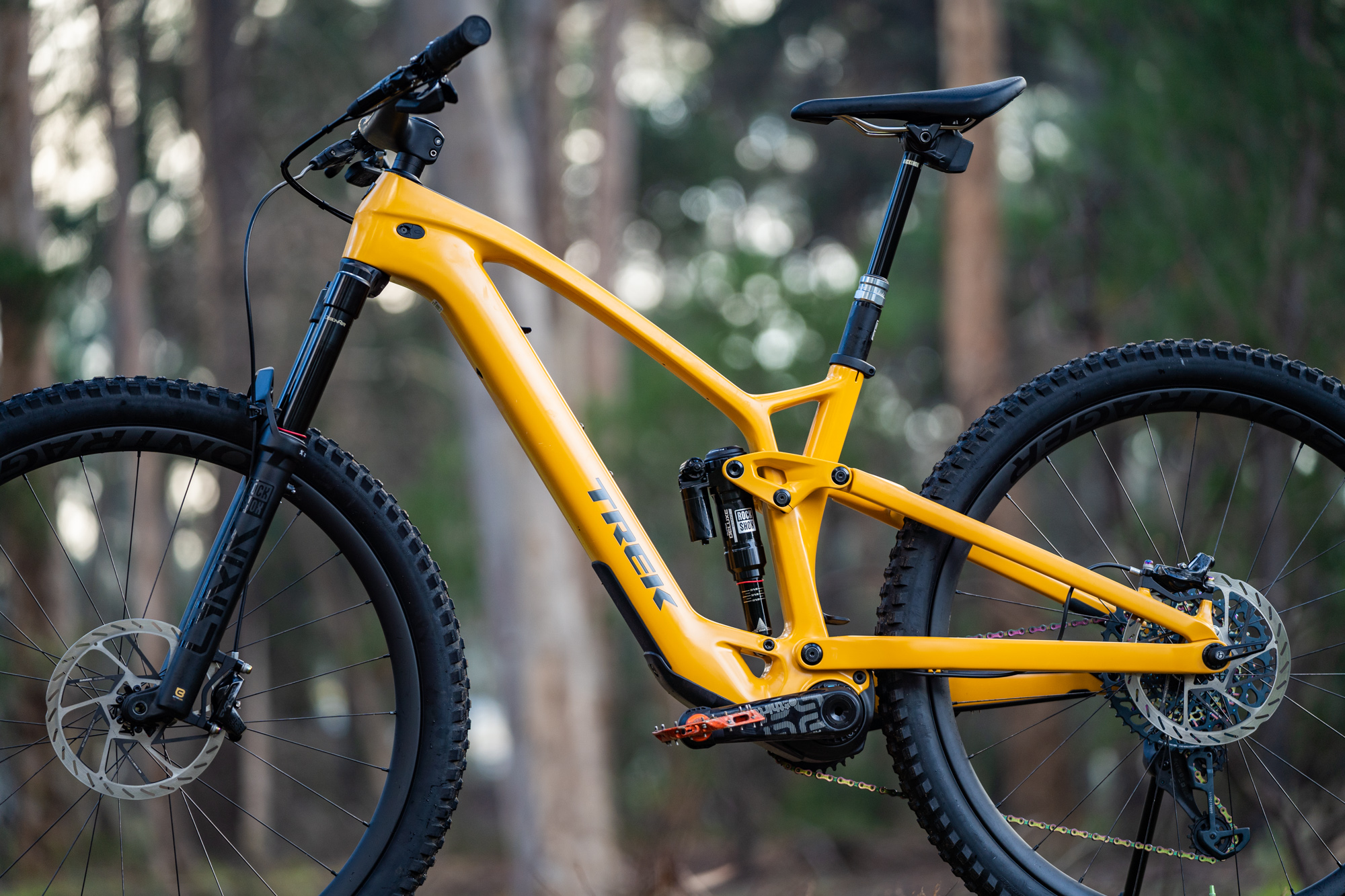Wil reviews the TQ HPR50 motor system
The TQ HPR50 motor debuted to considerable fanfare back in 2022 when it first appeared on the Trek Fuel EXe. As the lightest motor in its category, the HPR50 drive unit blew everyone away with its astonishingly compact form and whisper-quiet performance, changing our expectations of what a lightweight electric mountain bike could look and sound like.
Initially an exclusive for Trek, the HPR50 motor is now found on several lightweight e-MTBs including the Scott Lumen, Scott Voltage, Mondraker Neat, UNNO Ikki and Simplon Rapcon. The competition in this space is evolving at a rapid rate however, with the likes of the Bosch SX motor, Fazua Ride 60 system and an updated Specialized Levo SL returning fire at TQ.
So, nearly two years on since its official release, are we still just as impressed with the HPR50 motor as the day we first rode it? And how does it stack up against its modern day competitors?
Watch our video review on the TQ HPR50 motor here:

Who is TQ?
Compared to the likes of Bosch, Shimano and Yamaha, TQ isn’t quite as well known in the world of mountain bikes. The German tech company’s heritage resides in producing electronic components for the aviation, robotics and medical industries, though over the past decade it has also been making significant inroads in the e-Mobility segment.
One of TQ’s earlier products was the HPR120 motor, which was a 120Nm monster based around its unique Harmonic Pin Ring technology. Using an elliptical roller bearing and a patented gear mechanism, the HPR120 had no need for a separate gearbox like a conventional e-MTB motor. This made it simpler and surprisingly compact given its huge torque, but more importantly it delivered impressively efficient and quiet performance thanks to the reduction in moving parts.

Fellow German company Haibike was one of two brands to pick up the HPR120 motor, integrating it into its Flyon e-MTB. TQ also presented the motor to Trek in 2019, but while the Americans were impressed with the concept, they were looking for something considerably smaller to utilise for their new lightweight e-MTB.
That original conversation sparked the beginning of a 3-year development project to scale down TQ’s unique Harmonic Pin Ring design. The result was the HPR50 motor that formed the electric heart of the Fuel EXe.
The HPR50 motor has gone on to be a roaring success for the Bavarian-based manufacturer, which now boasts some 120 employees in its e-Mobility department, having started out with just two people only a few years ago. TQ informs us that it’s been working with more bike brands, and there are clues to suggest that there will be an expanded product range in the future.
I’ve got my own thoughts on that, but in the meantime let’s take a closer look at what makes up the HPR50 system.

An overview of the TQ HPR50 motor
The TQ HPR50 motor is a compact drive unit that has been purpose-built for the lightweight e-MTB segment. We’re talking bikes like the Specialized Levo SL, Pivot Shuttle SL, Focus JAM² SL, and Orbea Rise.
Unlike its competitors, the German-made motor utilises the Harmonic Pin Ring system with a single intermeshing gear that drastically reduces the number of moving parts. Most e-MTB motors spin very fast, requiring a step-down gearbox to rotate the crank spindle at a usable level for a bicycle. The HPR50 motor does not require a step-down gearbox however, and that makes it significantly more compact and a whole lot simpler.
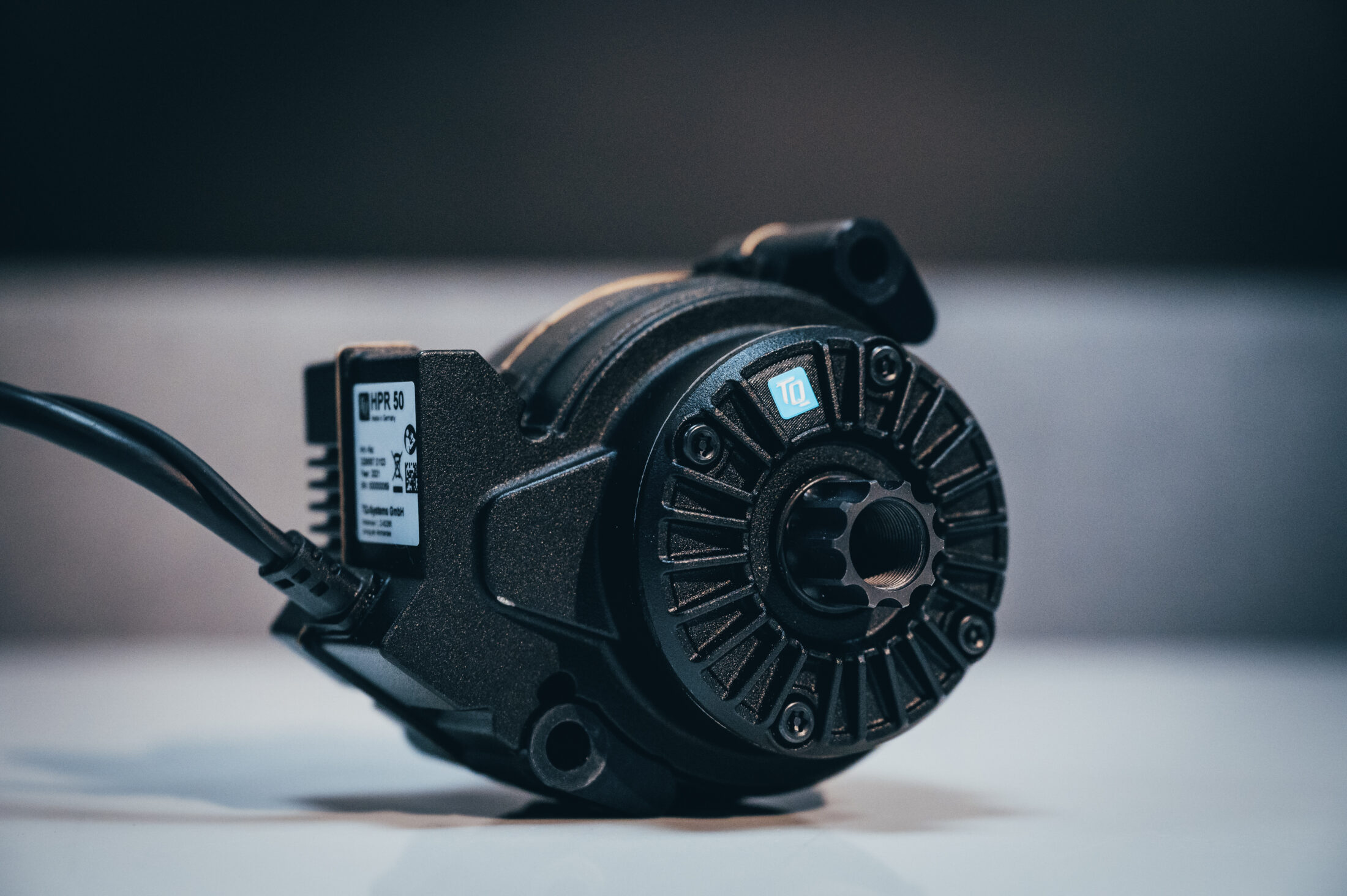
In terms of numbers, the HPR50 motor pumps out up to 50Nm of torque and 300W of peak power. It manages this while weighing just 1.85kg, making it the lightest mid-drive motor we’ve tested.
It’s also the most compact, with a neat form factor that allows for sleek frame designs that look less like an e-MTB and more like a regular mountain bike. More importantly, the diminutive size provides suspension designers with greater freedom when it comes to kinematics. There’s less restriction on pivot point locations, and it’s also possible to achieve a shorter chainstay length with greater tyre clearance.

Battery & controls
TQ has designed the HPR50 motor around its own 360Wh battery. There is an optional range extender, which I’ll touch on in a bit.
The slim 360Wh battery sits inside the frame’s downtube, and in the case of the Fuel EXe it can be easily removed for separate charging. On the Lumen and Voltage however, the battery is bolted in place and requires more significant disassembly to be removed. Each bike features an external charge port for recharging the battery in situ.
Maintaining the minimalist theme, the TQ system incorporates a small two-button controller next to the left-hand grip that allows you to switch between the three assist modes; High, Mid and Eco.

The controller is wired into a low-profile display that sits flush within the frame’s top tube. The 2in O-LED screen looks super neat, and it provides key information including riding speed, average speed, battery status, cadence, rider power input and motor power output. You can customise which metrics are displayed using the TQ smartphone app. You can also use the app to select the Stealth mode, which helps to reduce visual distractions for those who prefer a more analogue experience.
Furthermore, the app allows you to tune the motor. You can adjust the peak power output, support characteristic and acceleration level of each of the three assist modes, allowing you to customise the motor’s output for your needs.
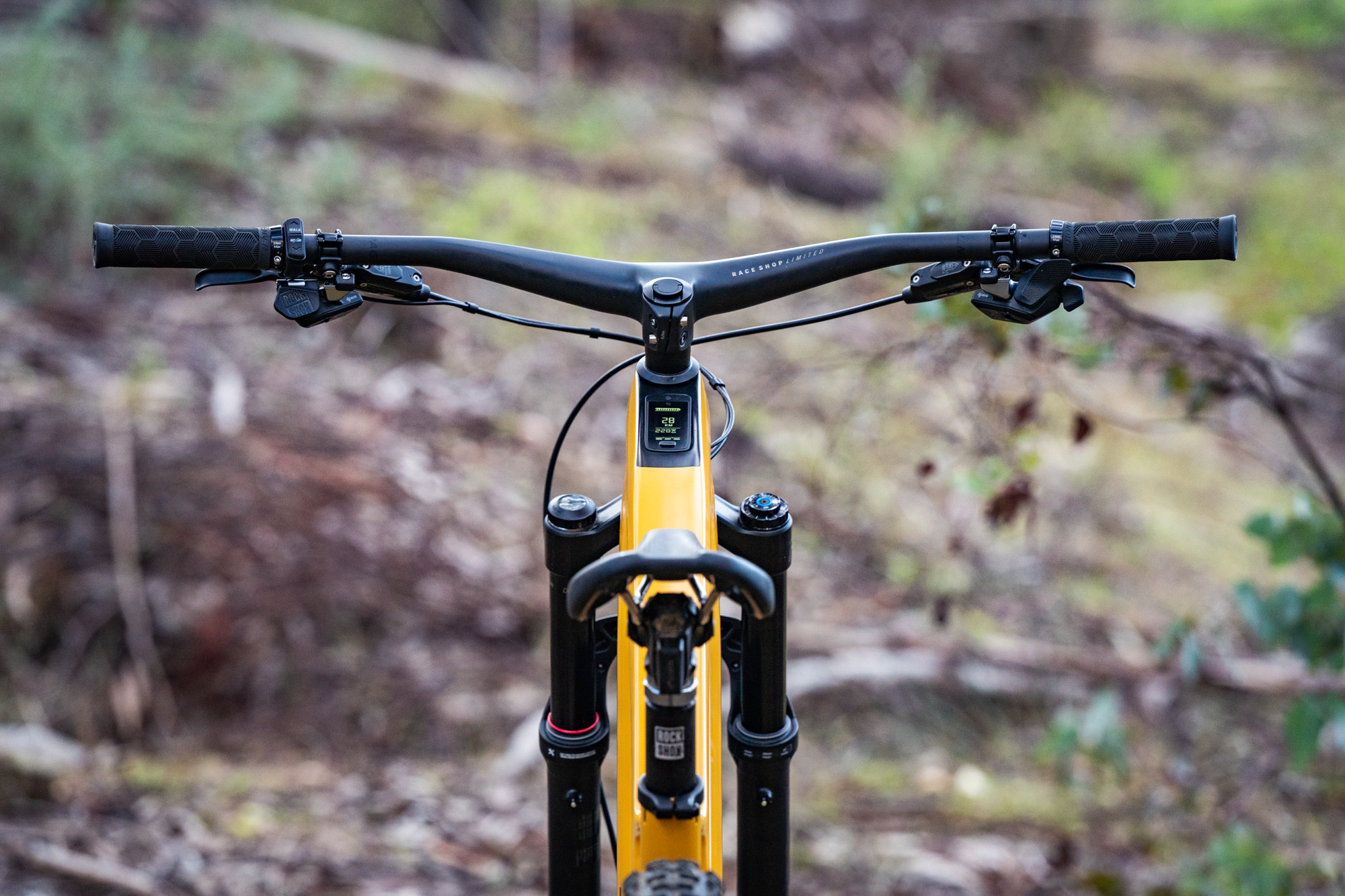
What do we dig about the TQ HPR50 motor?
First of all, it’s hard not to be impressed with the aesthetics of the TQ HPR50 motor and what it means for modern e-MTB design. Bikes like the Fuel EXe and Lumen do an incredible job of mimicking their analogue counterparts, to the point where we’ve often mistaken them for the regular Fuel EX and Spark.
Of course the svelte appearance also contributes to less weight on the scales too. Currently the Scott Lumen eRIDE 900 SL is up there as one of the lightest full suspension e-MTBs you can buy, coming in at a claimed weight of 16.9kg. That is staggeringly light, and shows just how far e-MTB technology has come in the past few years.

Whisper quietness
Size and weight aside, it’s the quiet performance of the TQ HPR50 motor that sets it apart from the competition. How quiet? During normal riding circumstances the sound of your tyres rolling across the dirt is typically more audible than the motor itself.
It’s quite the contrast to many other e-MTB motors that emit a loud whine that fills your ears while you’re riding. Sure you get used to it, but you don’t realise how annoying it is until you ride something as muted as the HPR50. After all, many of us enjoy mountain biking for its ability to take us into the wilderness and away from the hustle and bustle of urban living, so it’s nice to be on a bike that lets you soak up the environment around you.
It isn’t just the volume of the motor but also the pitch of the noise it generates. The mid-level tone doesn’t vary nearly as much as a regular e-MTB motor, which makes the sound less noticeable overall. It’ll still crescendo on a really steep climb when you’re in the highest assist setting, but even then it’s just not that loud.

Furthermore, the HPR50 motor doesn’t exhibit any clacking noise on the descents. This sets it apart from some Bosch and Shimano drive units, which feel and sound quite clunky when you’re freewheeling down a bumpy trail. In comparison the HPR50 is a lot quieter both up and down the mountain, lending to its stealthy character.
Smooth power delivery
Support from the TQ HPR50 motor is similarly stealthy. There’s nothing jerky or uncontrolled about the way it delivers its power, making it smooth and predictable when riding tight and technical singletrack. You never get pushed wide through a corner, with the motor responding quickly when you stop pedalling.

That smoothness is particularly evident around the 25km/h cutoff point. Or to be more accurate, it isn’t evident. The power tapers off gently in a way that makes it almost imperceptible when you’ve gone beyond the motor’s maximum speed limit. This attribute was most obvious on the Lumen, which comes fitted with lightweight and fast-rolling tyres. This offered faster initial acceleration and less deceleration whenever the motor cut out. Along with its quiet power delivery, there were many moments where I completely forgot I was on an e-MTB.
Smarter electronics
It’s worth noting that the motor’s support characteristic has been improved since it first launched. TQ has implemented numerous firmware updates, which riders can have carried out at their local bike shop. The latest version sees the motor better able to handle rapid changes in RPM, which was something we complained about with the first iteration. As a result, power delivery is smoother again and more intuitive on technical climbs.

TQ also explained to us that the HPR50 motor actually adapts its power output based on the rider’s input. Utilising its in-built torque sensors, the motor can measure the vertical force you exert through the spindle when standing on the pedals. This means it knows your physical weight, and by measuring how many watts your legs are putting through the cranks, it can even tell whether you’re riding with flat pedals or clips. Spooky!
The system uses all of this information to determine your individual ‘comfort zone.’ Of course this varies from rider to rider, and so the motor changes its support characteristic accordingly. Put simply, it will deliver less support for fitter riders, allowing you to better conserve the battery.

What are the downsides?
Although the stealthy performance of the TQ HPR50 motor will make it the holy grail of lightweight e-MTB technology for certain riders, for others the power delivery may be too subtle. Indeed if you’re looking for drag-car acceleration when taking off from a standstill, this isn’t the motor for you.
Being so small and light, there’s only so much power the HPR50 drive unit can deliver. In more demanding circumstances, like when you’re heading up a steep climb in a taller gear, there is less support from the motor compared to more powerful options on the market.
This wasn’t really a problem on the Lumen, which is already a light and sprightly XC bike. It was more noticeable on the Fuel EXe and Voltage, especially after fitting heavier duty tyres that meant there was more inertia to overcome.

Overall though, it will be less of a concern for the sportier and fitter riders that are typically attracted to a lightweight e-MTB in the first place. And it’s worth noting that the overall power output of the HPR50 motor is pretty similar to the SL 1.2 motor found in the latest Levo SL.
In terms of lightweight e-MTBs, only the Fazua Ride 60 motor delivers significantly more power. Of course it’s a bulkier and heavier system overall, though the bigger drive unit offers a noticeable increase in support. It allows you to climb faster with less effort, and it’s also more responsive in terms of initial acceleration.
In comparison, there can be some lag to the power pickup with the HPR50 motor. Despite the firmware improvements, I’ve still found there are moments where you’ll turn a couple of pedal strokes before the motor starts delivering support. Dialling up the acceleration characteristic in the TQ app helps, but it doesn’t completely remove the occasional delay.
You soon get used to it though, and it does mean that the HPR50 motor never surprises you with any off-putting surges in power. There’s certainly no fear of the hyper-sensitivity that you get with the Yamaha motor in the Giant Trance X E+ Elite, which suffers from an awkward pulsing sensation when you’re simply resting your feet on the pedals.

Heat management
While not an issue for any of our test riders here at Flow, there are reports of heavier riders suffering from reduced power output on sustained climbs with the TQ HPR50 motor.
This is likely due to the in-built heat management system, which is designed to prevent the motor and battery from overheating. Integrated thermal sensors provide live monitoring of various surface temperatures, with the aim of limiting the motor casing from reaching 70°C. If you get close to that, the motor will start dropping its power output in 5W increments. The system checks in with your current riding speed, with the assumption that if you’re riding faster you’ll have more air circulating around the motor to cool it down. On a slow climb in hot conditions however, the motor will continue dropping its power output until the operating temperatures reduce sufficiently.
Fundamentally, this is a good feature from the perspective that the system will avoid permanent damage to either the motor or battery. However, it may be annoying for heavier riders that are using the HPR50 motor in hotter climes like Australia. This reinforces our recommendation that heavier riders will generally be better off looking towards a full-powered e-MTB to begin with.
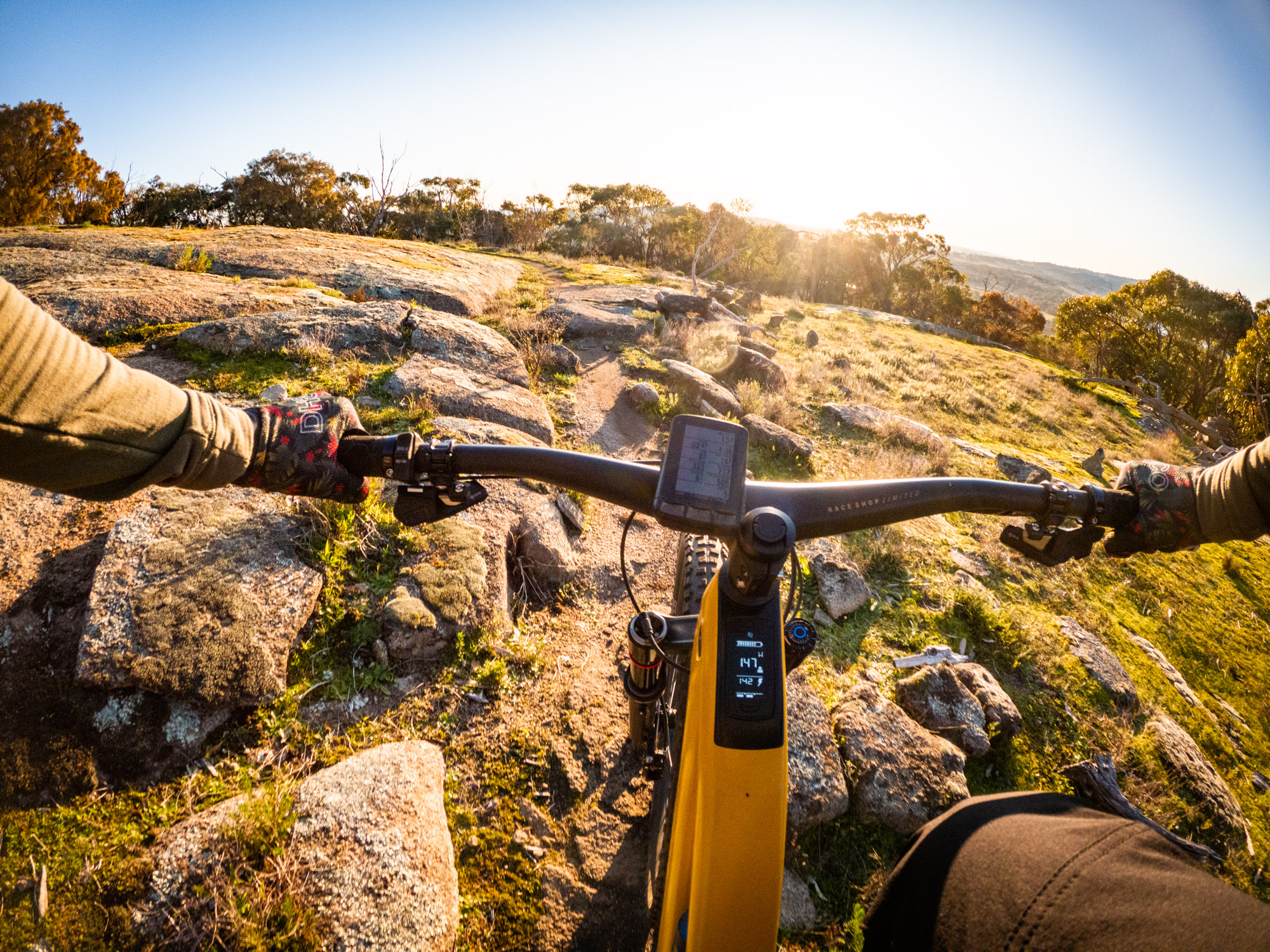
Range testing with the TQ HPR50 system
Part of that recommendation is also related to the TQ HPR50 system’s small 360Wh battery.
How much range you’re able to extract from it depends on a wide range of factors, with the most significant being rider weight and elevation gain. Tyre spec can also make a surprisingly big difference, with heavier casings and stickier rubber adding considerable drag.
Which assist mode you choose will also change how much power the motor draws from the battery. As such, a heavier rider going up an awkward tech climb in the High assist mode is going to drain it a lot quicker than a lighter rider pedalling smoothly up a gradual fireroad in Eco mode.
Because of all those factors, pinpointing an exact range estimation is impossible and somewhat futile given it won’t necessarily translate between different riders. However, I can at least provide a point of comparison between the three TQ-equipped bikes I’ve ridden, and how they stack up against all the other lightweight e-MTBs we’ve reviewed.
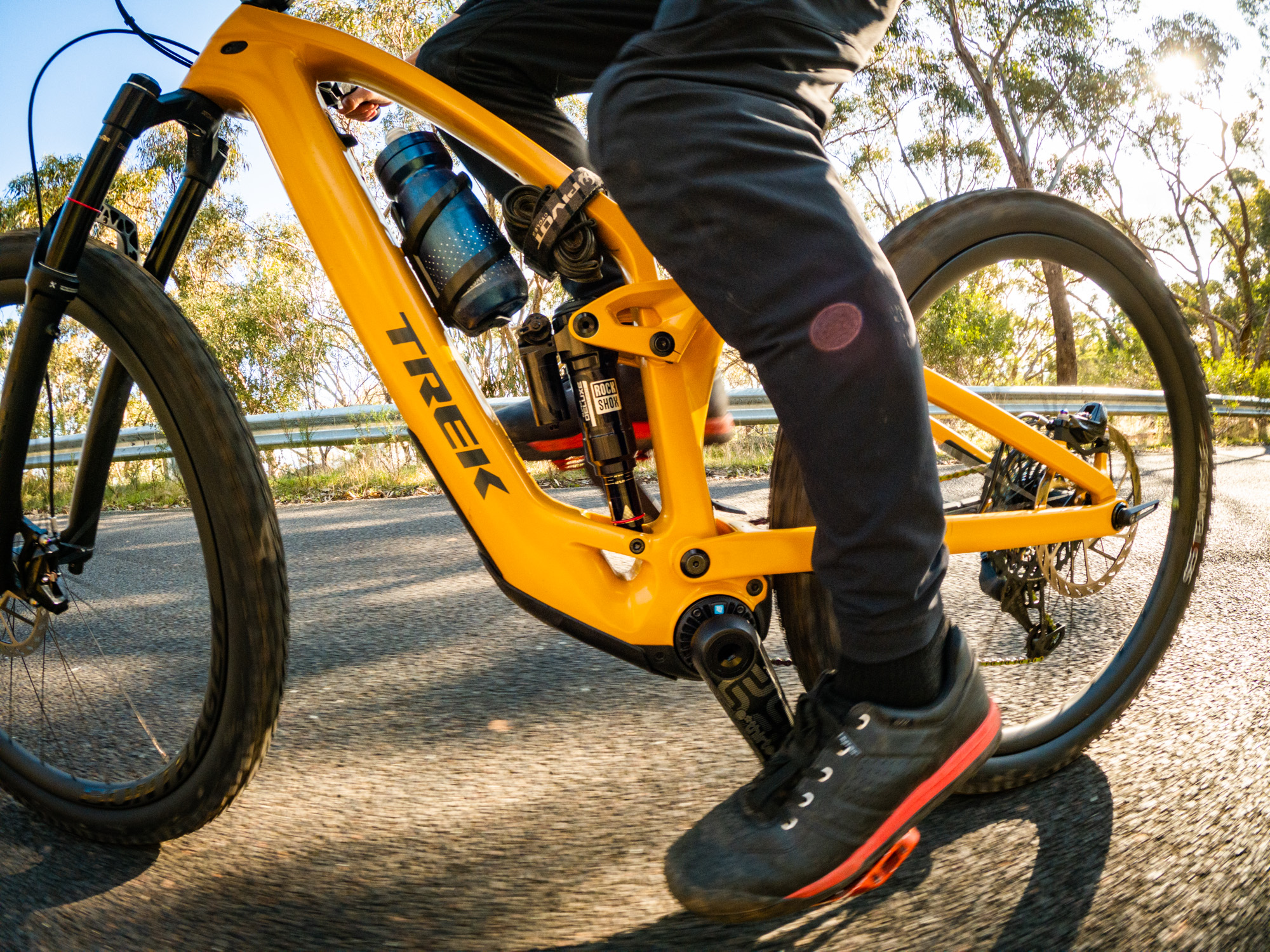
Below is the total amount of elevation gain that each e-MTB achieved in our standardised range test. This involves pedalling up the same road climb with the motor set to its most powerful assist setting, before heading back down via a singletrack descent. The idea is to rack up as many laps as possible before the battery runs flat. It’s certainly not a perfect test, but with the same rider and climb, it’s about as consistent and repeatable as possible;
- Focus JAM² SL (Fazua Ride 60, 430Wh Battery) – 1,665m climbing
- Scott Lumen (TQ HPR50, 360Wh Battery) – 1,567m climbing
- Orbea Rise (Shimano EP8-RS, 360Wh Battery) – 1,388m climbing
- Trek Fuel EXe (TQ HPR50, 360Wh Battery) – 1,312m climbing
- Scott Voltage (TQ HPR50, 360Wh Battery) – 1,311m climbing
- Specialized Levo SL (SL 1.2, 320Wh Battery) – 1,307m climbing
- Giant Trance X Advanced E+ Elite (SyncDrive Pro, 400Wh Battery) – 1,057m climbing
- Specialized Kenevo SL (SL 1.1, 320Wh Battery) – 1,053m climbing
As you can see from those results, the Scott Lumen achieved the most range out of any of the TQ-equipped bikes. The extra 200m of vertical elevation gain shows just how big of a difference the tyres can make, with the Lumen’s XC tyres rolling significantly faster than the heavy enduro-style tyres on the Voltage and Fuel EXe.

What about the range extender battery?
For riders looking to expand their riding options, TQ offers an optional 160Wh range extender that increases the total battery capacity to 520Wh.
The range extender sells for $899 AUD on its own, though both Trek and Scott require you to purchase the extension cable and mounting hardware separately. This will set you back an additional $100 AUD.
In the case of the Fuel EXe, the range extender sits in the bottle cage on the downtube. This means you can’t carry a water bottle on the bike, which is kind of annoying and forces you to wear a hydration pack. On the Lumen and Voltage however, both frames are able to carry the range extender battery and a water bottle.
With the extension cable and hardware, you’re looking at around 1.1kg of extra weight for the range extender battery.

Once plugged in, the display on the top tube will read the battery status as 150%. There’s a bit of rounding-up going on here however, as the range extender doesn’t quite represent a third of the total capacity.
Furthermore, the battery cells in the range extender are different to those used inside the main battery. This is because the system is designed to drain the range extender first, which means the cells inside need to be capable of supplying the motor with up to 300W of peak power on their own.
As such, the first ‘50%’ that indicates the range extender’s capacity will drain quite a bit quicker than the main battery, which is something we noticed when testing the Voltage up at Lake Mountain. Halfway up the main climb, the range extender was already spent with only around 400m of elevation gain on the clock.

That being said, I still think the range extender is a useful addition. We ended up riding the full 50km loop with 1,500m of elevation gain that day, most of which was in the High assist setting. That’s an impressive amount for a lightweight e-MTB, and it would have been a lot more if I’d ridden exclusively in the Eco mode.
Indeed with the extra capacity, you’ve got the ability to take on proper all-day epics. For those riding a big figure-of-eight loop or cutting laps at the bikepark, you could easily run the range extender flat, ditch it in the bushes, and pick it up on your way back out.
Alternatively, the range extender allows you to ride in the High assist setting for longer, which is useful if you’re heading out for an after-work blast with mates who are all on full-powered e-MTBs. You’ll still be working harder on the climbs, but you’ll be able to get to the pub without fear of a flat battery.

TQ HPR50 problems & warranty support
Thankfully there have been no issues with the TQ HPR50 system across the three bikes we’ve tested over the past two years. We’ve not had any of the motors cut-out and there have been no problems with the display or app connectivity.
As mentioned earlier there are online reports of heavier riders struggling with heat management problems on extended climbs in hot conditions, but that’s not something that any of our test riders have encountered. Our overall experience has been flawless, which is really what we’d expect for a high-end e-MTB these days.
This experience differs to the Fazua Ride 60 motor, which exhibited some cutting-out issues on the Focus JAM² SL and completely failed on our Santa Cruz Heckler SL test bike within the first 14km of riding. That’s concerning, and we’re still waiting for a diagnosis to find out what caused the problem in the first place.
If something was to go awry with the TQ HPR50 system, you’ll need to go through your local Scott or Trek dealer to have it rectified since TQ doesn’t have any direct presence in Australia. Instead, TQ works directly with Trek and Scott so that both brands can provide after-sales service and warranty support for their customers.
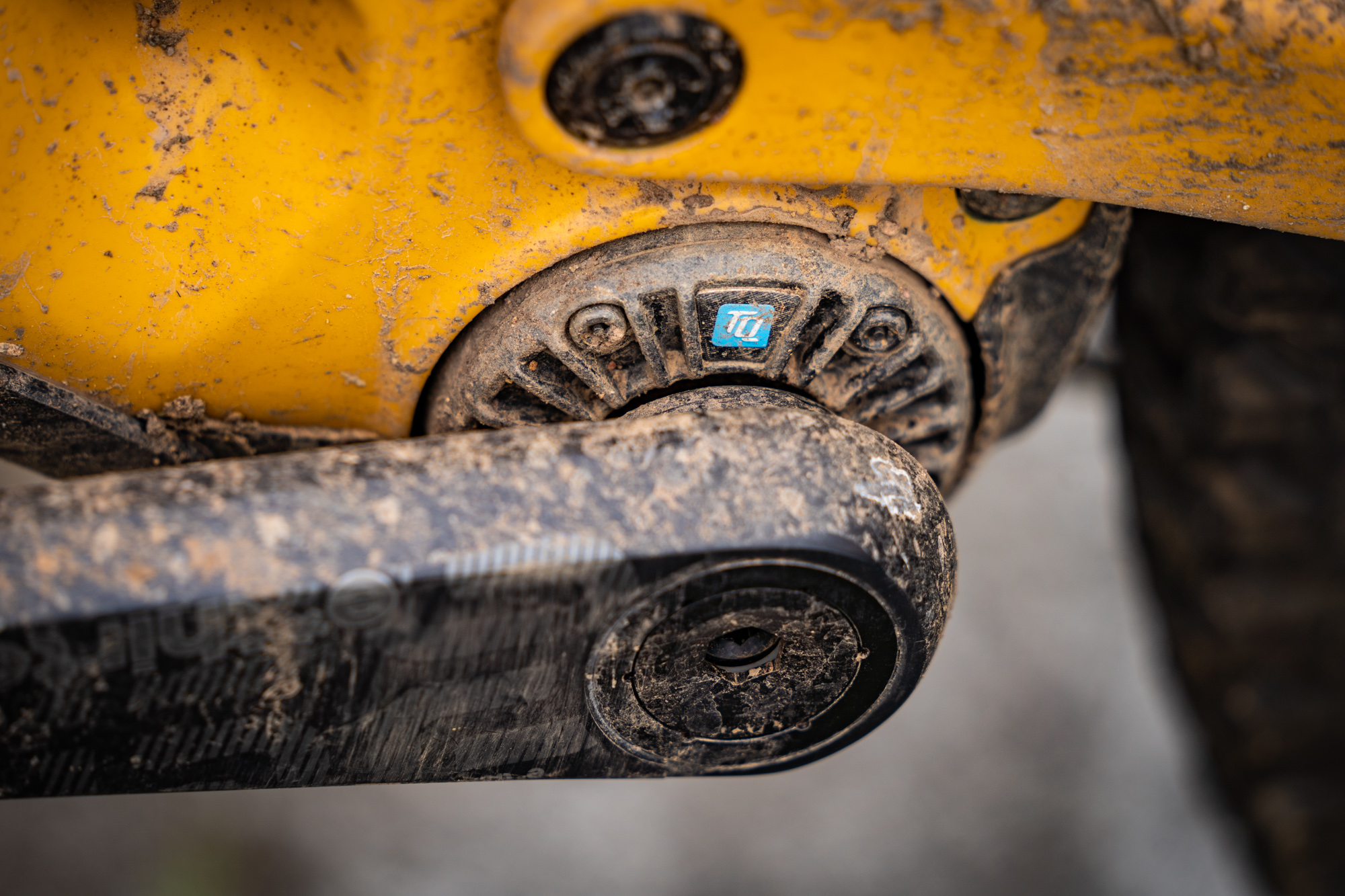
What do we want to see from TQ in the future?
Given all this discussion around range testing, I wouldn’t be surprised to see TQ offer more battery options in the future. A larger capacity battery, say 400-500Wh, would be appealing especially for heavier riders who need the extra juice without having to purchase an additional range extender.
As for the motor, I expect TQ will be working on variations of its HPR technology. It’s already proven to be scalable, and I think it’d be cool to see a HPR70 or HPR90 motor to provide a new option for full-powered e-MTBs to compete with the likes of Shimano, Bosch, Brose and Yamaha. The benefits of the Harmonic Pin Ring system would still apply to a higher-powered motor, and there’s certainly room in the market for a drive unit that offers quieter performance and a more compact form factor.
On the other side of the range, TQ told us that some brands have actually been asking for an even smaller and lower-powered version of the HPR50 motor. I’m not so sure about that for e-MTB use, though I can see it being relevant to the gravel and road markets.
TQ also informed us that it’s working with other component manufacturers on further integration. Already SRAM’s AXS derailleurs can be wired directly into the main battery, leaving you with one less thing to remember to charge. Perhaps we’ll see a similar arrangement with electronic dropper posts and lighting systems. Also on the horizon is the development of over-the-air firmware updates, so riders won’t have to take their bike into the local shop to perform routine updates. If you’re curious about what else is coming, see our in-depth chat with TQ about the future of e-MTB technology.

Flow’s Verdict
While we expect there will be more to come from TQ in the future, it makes complete sense why the German electronics specialist jumped into the lightweight e-MTB category first. The team knew its Harmonic Pin Ring technology could deliver compelling advantages over the competition, and the HPR50 motor has done just that.
The drive unit is incredibly lightweight and compact, leading to more visually-appealing frame designs and greater flexibility when it comes to suspension kinematics and chainstay clearance. It’s also remarkably quiet, making the whole experience feel closer to a regular mountain bike.
The subtle performance works well for modern lightweight e-MTBs, especially for lighter and sportier riders. Folks who are new to mountain biking will also find the HPR50 motor to be easier to manage on tight and twisty singletrack. Its smooth and intuitive power delivery enhances your leg’s output without dominating the riding experience, allowing the motor to simply fade into the background.
We’d still suggest that heavier folks who are after more grunt may be better off looking towards a full-powered e-MTB with a bigger battery. There are new bikes coming out that are aiming to straddle the current gap, including the Giant Trance X E+ Elite and the Merida eOne-Sixty. No doubt there will be more genre-blurring options on the horizon, and with that in mind, we look forward to seeing TQ build on the success of the HPR50 motor in the coming years.
